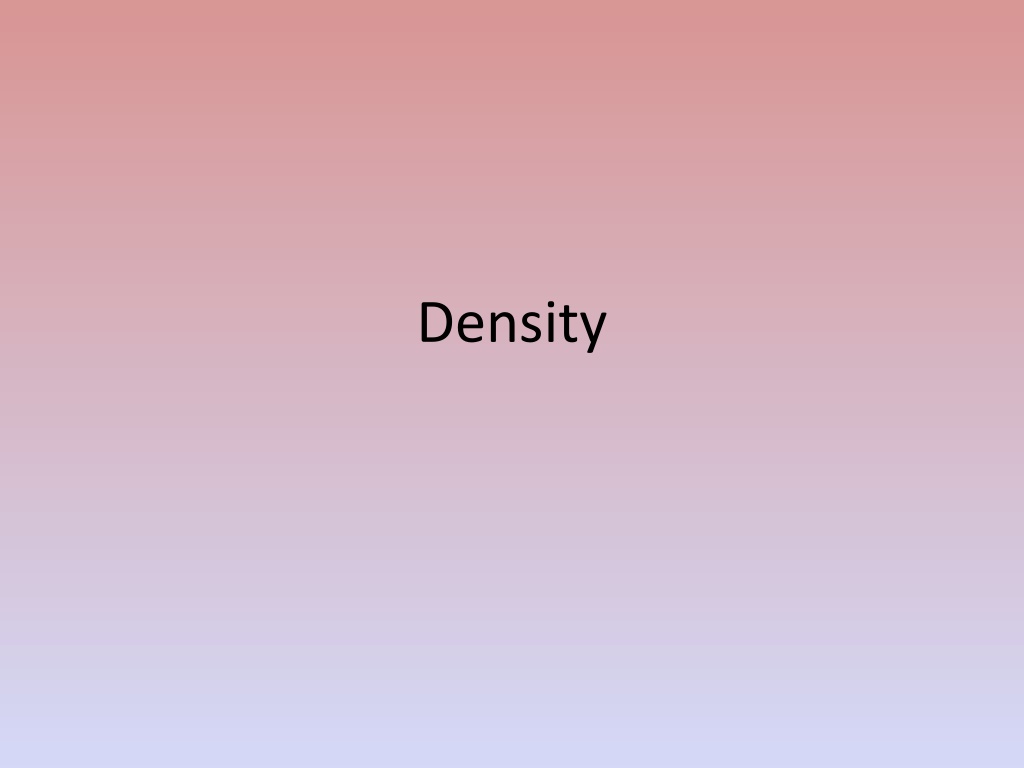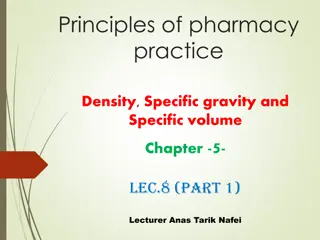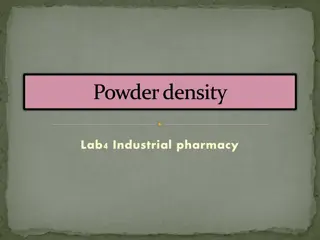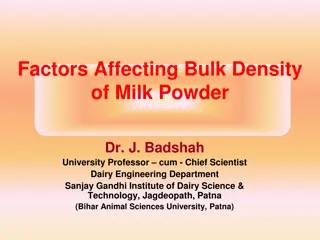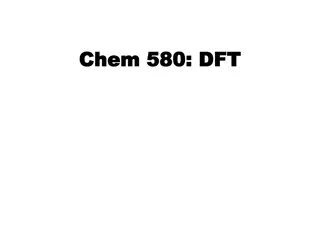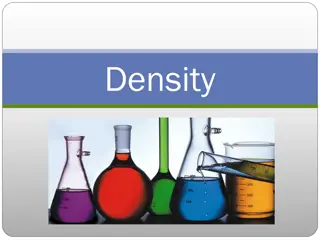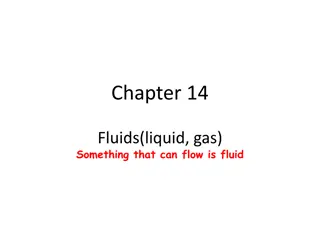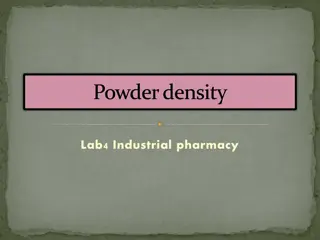Understanding Density and Mass in Materials
Explore the concept of density, how it relates to the mass of materials, and its role in phenomena like layering in solutions. Discover how different materials can have varying densities and learn how to measure densities through experiments and observations.
Download Presentation

Please find below an Image/Link to download the presentation.
The content on the website is provided AS IS for your information and personal use only. It may not be sold, licensed, or shared on other websites without obtaining consent from the author. Download presentation by click this link. If you encounter any issues during the download, it is possible that the publisher has removed the file from their server.
E N D
Presentation Transcript
Which is heavier, gold or feathers? Which is heavier, cup of foam or cup of beans?
Density When you have equal amounts of material, and one is heavier than the other, the heavier material is denser. Density is the amount of matter in a volume of material.
Density There is a lot more matter in a volume of rock, steel, or gold. There is far less matter in an equal volume of cotton, cork, or air. The rock Is denser than the cotton.
Density Density is a property of matter. All matter has density, including all solids, liquids, and gases. If you compare equal amounts of matter, and one is heavier (has more mass), the heavier volume is denser.
Density Return to investigation 5-1 step 1, take a minute to write your understanding of density under the line of learning. You can draw pictures and write words to help you understand density.
Salt Solution experiment Do you think density played a role in the layering phenomenon? Measure yellow and red salt solutions: Will these two identical volumes of salt solutions have the same mass? If not, which one will have a greater mass?
Discussion Strategy: Which solution is denser? How do you know? Which solution layered on top of the other? What does this tell you about how liquids of different densities interact?
~Measure the rest of the solutions. ~Write all of the masses down on the Liquid Layers investigation.
Think Question I have two samples of salt water. Sample 1 is 45ml, and its mass is 54g. Sample 2 is 120ml and its mass is 132g. Which sample is denser?
Vocab Density is a ratio between the mass of a sample of matter (something) and its volume. How heavy something is from its size. The Mass of a sample is the amount of stuff in it. You find the mass of something by weighing it. Mass is measured in grams. Volume is how much space a sample of matter occupies. ALLmatter has volume.
Volume We measure the volume of a liquid with a graduated cylinder. Solids and gases are measured in cubic centimeters. Cubic centimeters and milliliters are the same.
Density=the amount of mass per cubic centimeter. Density can be written as an equation. Density= Mass Volume http://www.brainpop.com/science/matterandc hemistry/measuringmatter/
Calculating Density http://www.fossweb.com/modulesMS/kit_multi media/WeatherandWater/pdfs/transparencies /WeatherWater_transp_15.pdf
